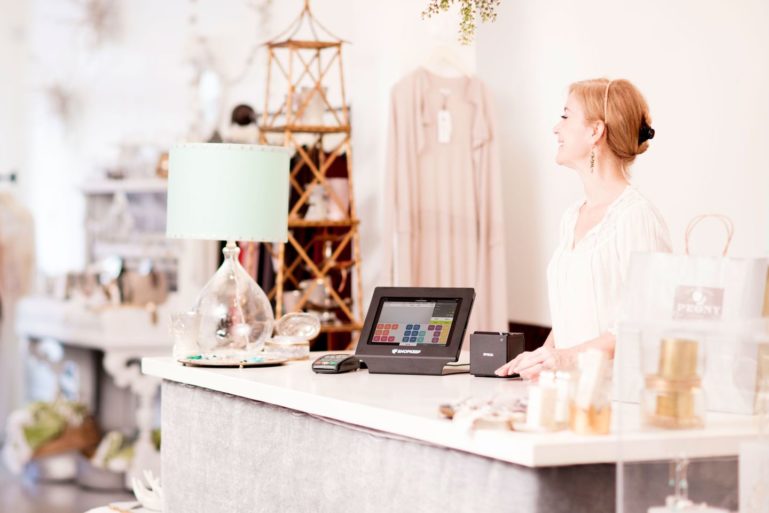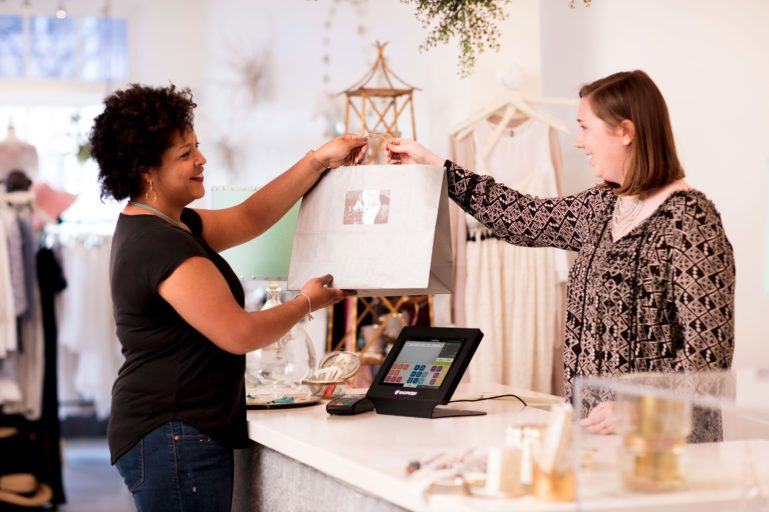
6 No-Fail Cash Management Solutions for Retail
Cash may no longer be king, but it certainly isn’t dead. Since we haven’t completely turned into a cashless society, yet, retail cash management solutions are still a necessity for small business owners.
The days of manually counting every dollar and penny in the cash drawer are over. A manual adding machine is no longer required to sum up your daily, weekly, or monthly sales. Unless of course, you enjoy wasting your time and increasing the probability of making a bookkeeping error that will take you months to uncover. For most retailers we know, that’s a hard no.
Cashflow is a daily part of your business and also one of the more vital components. Let’s take a look at some more practical and efficient ways to manage your business’ cash.
Good Cash Management Starts With A POS System
A point of sale (POS) system is the first step in modern-day retail cash management. To track cash flow, an excellent place to start is by monitoring the cash coming into your business. And there’s no better way to do that than at the point of purchase.
Cash registers are so yesterday. What modern retailer has time to manually review daily sales from a strip of cash register tape? Who has the storage space to keep all those receipts for the next seven years?
POS systems like ShopKeep’s iPad POS can make cash management easy. POS systems can manage all your cash transactions, and if you use it with a compatible merchant account, it can also manage all your credit card transactions too. Not to mention, gift cards, checks, smartphone payments, and debit cards. Since not all customers will pay in cash, it’s nice to give them other payment options.
Every time you ring up a sale on a POS, a record of that transaction is recorded. That record contains data points such as the inventory items that sold, the employee who made the sale, and how the customer paid for the goods. All that information and more is funneled into reports that are accessible to you 24/7/365.
You can easily see how much cash you took in for the day, when and who made any pay-ins or payouts, and you can even record the type of payouts such as a safe drop or inventory purchase. Sure, you can do this with a cash register too, but it would be a manual process and a lot more time-consuming.
While a POS system should make up the foundation of your cash management operation, you’ll want to combine it with other cash management best practices. Let’s take a look at some of those now.

Combating Counterfeit On The Frontline
In addition to a POS system for tracking cash, you’ll also want to make sure the funds you receive are legitimate currency. With an estimated $220 million in counterfeit cash circulating in the U.S., fake money is a problem for businesses of every size.
There are two critical steps you can take to combat counterfeit cash:
Train Your Employees. Since your employees are going to be front and center handling cash payments, it’s essential that you train them on how to identify counterfeit currency. Fake bills are more sophisticated thanks to advances in digital technology, but there are still measures you and your staff can take to help minimize the risk of becoming a victim.
Employees should know the marks of real cash. Each bill has different watermarks and security marks that help you recognize their authenticity. For more on the specifics of each note, visit U.S. Currency Education Program.
Counterfeit Detection Pens. For about $10 each, you can pick up a few counterfeit detection pens at your local office supply store. Place them next to every POS station or have your employees keep them on their person if you do mobile checkouts on the retail floor.
Most importantly, show your employees how to use the pens, and train them to check every bill that passes through their hands as part of your standard checkout procedure.
SEE ALSO: The Small Retailer’s Guide To Successful Staff Training
Counting and Sorting Cash
At the end of each shift or business day, all the cash balances you’ve collected throughout the business day now need to be counted and sorted. This way, you can confirm that the amount you have on-hand matches the amount from your POS report on cash transactions and cash drawer balances.
Traditional retailers rely on the manual method of cash counting by sorting like denominations into piles, counting them, and punching the totals into an adding machine; repeating the same steps for coins. If you don’t have a lot of cash sales and most of your customer pay by debit card or credit, this method may work for you.
However, you are still leaving yourself open to human error in the counting department. You may come up with a total that is different than what your POS reports show. A registers activity report may help you track down where or why a discrepancy may have occurred. You also have to do a recount to help track down the error.
Rather than spending time with recounts, you’re better off spending a few hundred dollars on a currency counter that will count and sort your cash. While this device won’t solve cash discrepancy problems, at least you won’t waste time manually recounting the cash-on-hand.
Keep Cash Safe And Secure
Once you’ve counted the cash on hand, you’re going to need a place to store it – at least temporarily. It’s not practical for managers to run to the bank every time they make a cash drop during business hours. Not only is it impractical, but it may also be downright impossible.
Most financial institutions don’t adhere to retailer’s hours. They comply with banker’s hours. If your shop closes at 7 pm every evening, it’s likely that your bank will be closed by the time you lock up.
To solve this operational dilemma, most merchants keep a lockbox or safe to temporarily store cash until they can get to the bank to deposit it into their business accounts. Usually, the money is only stored in the business overnight. However, some owners choose to bring it home with them and store it in a safe at their house until the next day.
There are also “smart safes” that not only offer secure storage for all your cash but can also validate your bills as your deposit them. These devices use optical sensing at several wavelengths to determine the legitimacy of the bills. Once the bills are validated, they are neatly stored in a secure cassette that you can remove and bring right to the bank.

Remote Deposit Capture (RDC)
Although this is not what we traditionally think of as cash (in the form of bills) like we’ve discussed up to this point, checks are a delayed form of cash payments that have an impact on your receivables, so it’s worth a quick mention.
Most small businesses don’t accept checks these days, but there are exceptions to the rules. For instance, you may allow a regular customer to pay by check if they’re making a substantial purchase or for a special event.
Rather than waiting to take the check to the bank to deposit it, you can use a remote deposit capture method to collect the check without ever leaving your store. The rise of online banking makes RDC extremely simple. You open up your banking app on your phone, capture an image of the check (front and back), input the amount, select the bank account where you want to deposit the funds and click submit.
You’ll need to check with your financial institution about some of the finer details such as daily or monthly deposit limits; generally speaking, RDC services offered will be on target with your business needs.
A Little Armor Goes A Long Way
Another great way to get out of the physical aspect of banking is to hire an armored truck service. For businesses that have high cash volume, armored transport services are worth the added protection and security measure.
After you’ve counted, sorted, and stored your cash in the safe, the ultimate destination for that money is in the bank. Since innovation has not yet brought us ways to transport bills through a digital medium, someone has to be the responsible party and deposit the cash.
Armored truck providers such as Brinks not only offer transit services but they also off other services such as cash automation and security guard services should you need them. And of course, risk-free insurance coverage should something happen to your money during transit.
The Bottom Line
Whether you’re a startup looking for cash management solutions or a seasoned retailer, finding ways to simplify your cash management processes can significantly improve your cash flow and boost your business performance. Unless you’re a cashless business, every retailer needs secure and efficient cash management solutions.
Want to try ShopKeep for yourself?
Just answer a few easy questions.
Need help finding the right point of sale?
Just complete the form. We’ll call you right back to explain how ShopKeep can work for you.
Hit the ground running.Sprinting, in fact!
Read our free, comprehensive guide, Small Business 101, to learn all you need to know about starting a thriving business.

